Blog » Travel Guides » Top Places to Trave...
Top Places to Travel in Vietnam in 2025: Must-Visit Destinations and Hidden Gems
Explore the best places to travel in Vietnam for 2025 with this comprehensive guide covering vibrant cities, breathtaking natural wonders, emerging destinations, and essential travel tips. Whether you seek cultural immersion, adventure, or relaxation, this guide offers practical advice to tailor your perfect Vietnam itinerary.
Key Takeaways
- Vietnam offers a diverse mix of bustling cities, rich culture, and spectacular natural landscapes making it a top travel destination in 2025.
- The best time to visit varies by region, with spring and autumn ideal for most areas, while the north experiences four distinct seasons and the south remains warm year-round.
- Emerging destinations like the Ha Giang Loop and Pu Luong Nature Reserve provide authentic cultural experiences and stunning off-the-beaten-path adventures.
- Vietnamese cuisine varies regionally, with northern dishes being subtle, central foods bold and spicy, and southern flavors sweet and vibrant.
- Travelers should prioritize travel insurance with emergency and evacuation coverage, use trusted local transportation options, and stay connected via officially registered SIM cards.
- A balanced itinerary combining city exploration, nature, culture, and relaxation with flexibility enhances the overall Vietnam travel experience.
Dreaming of an adventure in Asia? Vietnam is definitely one of the best places to travel in Vietnam in 2025.
It offers an amazing mix of lively cities, breathtaking natural sights, and charming hidden spots.
Whether you love bustling streets, diving into history, or soaking up peaceful landscapes, Vietnam has something unforgettable for every type of traveler.
In this guide, you’ll find the top must-visit cities like Hanoi and Ho Chi Minh City, check out incredible natural wonders such as Ha Long Bay and Phong Nha-Ke Bang National Park, and explore lesser-known destinations for those wanting something unique and authentic.
Along the way, we’ll share useful travel tips, cultural insights, and practical advice to help you plan an amazing Vietnam trip.
Get ready to wander ancient towns packed with history, cruise across emerald waters, savor delicious street food, and discover hidden gems that make Vietnam a travel destination you won’t forget in 2025.
Let’s dive into the best places to travel in Vietnam!
Introduction to Traveling in Vietnam
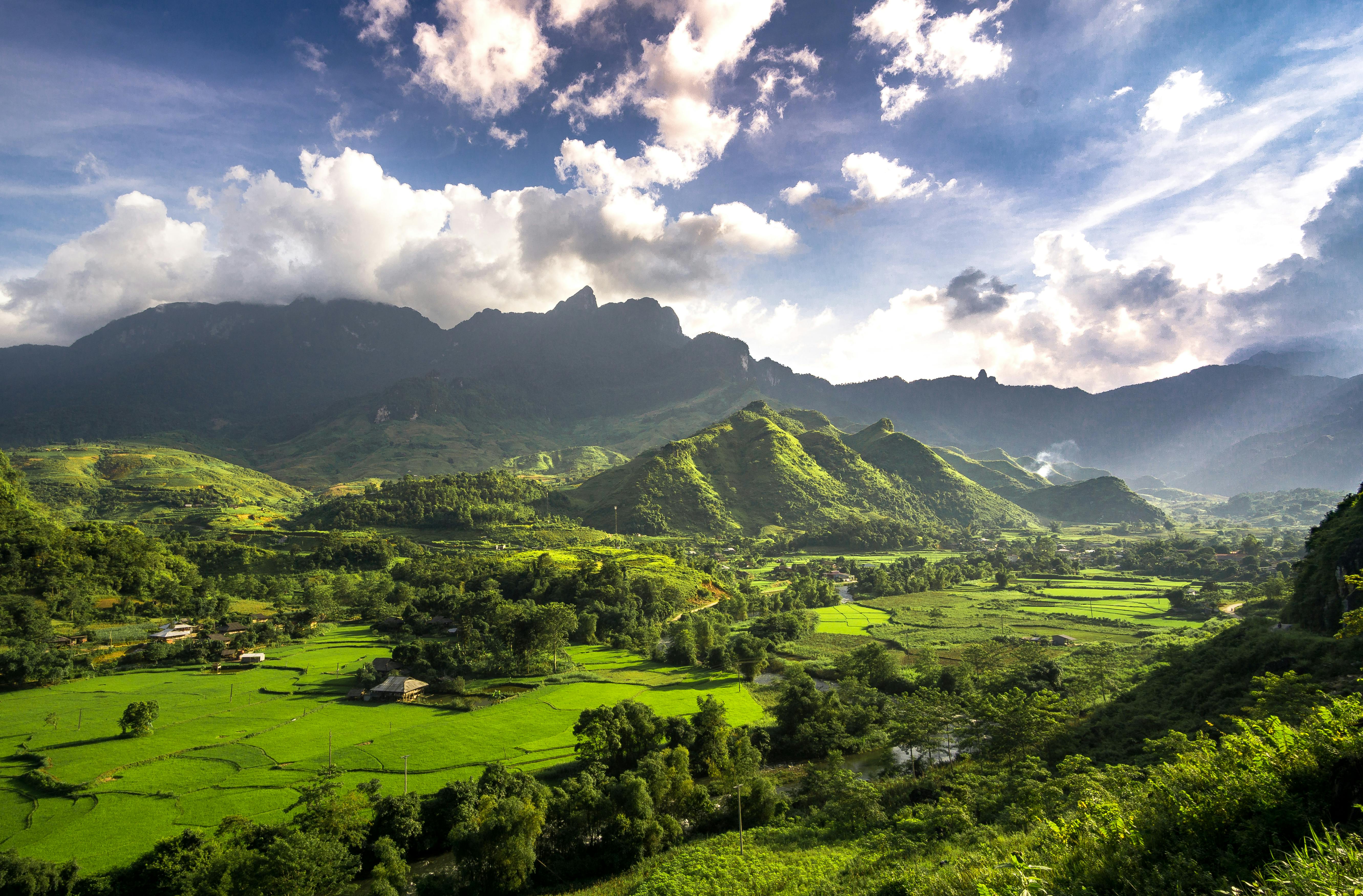
Vietnam really shines as a travel destination in 2025, thanks to its mix of bustling cities, stunning natural beauty, and rich culture. From energetic urban centers to peaceful countryside and pristine landscapes, there’s a huge variety of experiences that suit all kinds of travelers.
Why Vietnam is a Top Travel Destination in 2025
What makes Vietnam stand out this year is its amazing blend of ancient traditions with modern energy.
The lively streets of Hanoi and Ho Chi Minh City buzz with life, while natural wonders like Ha Long Bay and Phong Nha-Ke Bang National Park take your breath away.
Travelers love Vietnam for its:
- Affordable options: Whether you’re on a tight budget or want something luxurious, there’s a spot for you—from hostels to high-end resorts.
- Rich culture: Historic pagodas, colonial buildings, vibrant festivals, and diverse ethnic traditions let you dive deep into local life.
- Scenic variety: Think limestone peaks, terraced rice fields, tropical beaches, and bustling markets—it’s all breathtaking.
- Emerging destinations: Hidden gems like the Ha Giang Loop and Phong Nha-Ke Bang offer adventures off the tourist track.
Overview of Vietnam’s Diverse Regions and Experiences
Because Vietnam is long and narrow, it has distinct regions with their own culture and landscapes. Here’s a quick look to help you get your bearings:
- North Vietnam: Hanoi’s lively streets and tasty street food are a must. Trekking fans will love Sapa and Ha Giang, with ethnic minority cultures and stunning rice terraces. Ha Long Bay’s iconic limestone islands and the dramatic countryside of Ninh Binh round out the north.
- Central Vietnam: The ancient town of Hoi An, with its lantern-lit evenings and tailor shops, is a highlight. Hue offers imperial history and royal tombs, while Da Nang blends beaches and modern architecture like the Golden Bridge.
- South Vietnam: Ho Chi Minh City combines French colonial charm with busy markets. The Mekong Delta fascinates with floating markets and traditional villages. Phu Quoc Island boasts stunning beaches and vibrant marine life.
Don’t forget spots like Nha Trang’s sunny beaches and Phong Nha-Ke Bang’s incredible caves. No matter where you go, Vietnam’s variety means there’s something unforgettable waiting for you.
How to Use This Travel Guide
This guide is your go-to for uncovering Vietnam’s top places in 2025, helping you to:
- Discover top spots: We break down what makes each place special and how to get the most out of your visit.
- Plan smarter: Find tips on the best times to visit, how to get around, and where to stay no matter your budget.
- Understand culture: Learn about local customs, must-try foods, and unique experiences.
- Customize your trip: Whether you want adventure, relaxation, or cultural deep dives, there’s something for you.
“Mixing well-known sights with hidden gems turns a regular trip into a real adventure.”
Vietnam Travel Expert
Top Must-Visit Cities in Vietnam
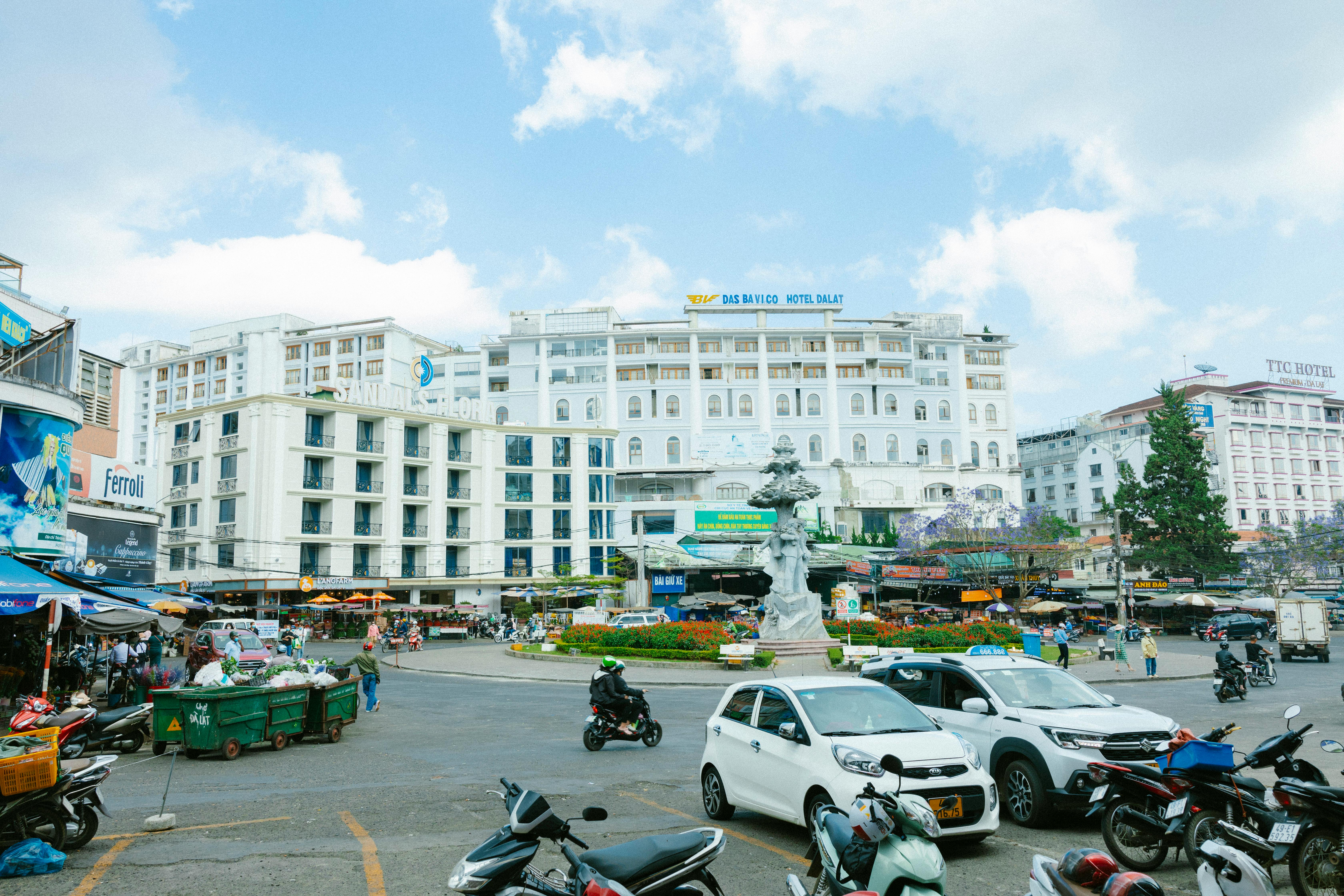
Vietnam’s iconic cities give a great glimpse into its history, culture, and modern vibe. From the old-world charm of Hanoi to Hue’s imperial grandeur, these urban hubs are some of the best places to explore in Vietnam for 2025.
Hanoi: Cultural and Historical Highlights

Hanoi blends centuries of history with a lively street scene. The Imperial Citadel of Thang Long, a UNESCO site, shows off Vietnam’s dynastic past, while the Temple of Literature, the country’s first university, offers peaceful Confucian architecture.
Wander the bustling Old Quarter with its markets, street food stalls, and traditional crafts that reflect local life. Early mornings by Hoan Kiem Lake are perfect for enjoying a local breakfast as the city wakes up.
- See Hanoi by cyclo or on foot to soak in its contrasting neighborhoods up close.
- Try the famous Vietnamese egg coffee at cozy lakeside cafés.
- Catch beautiful sunsets over West Lake and take a peaceful evening stroll across Long Bien Bridge.
Ho Chi Minh City: Urban Energy and History
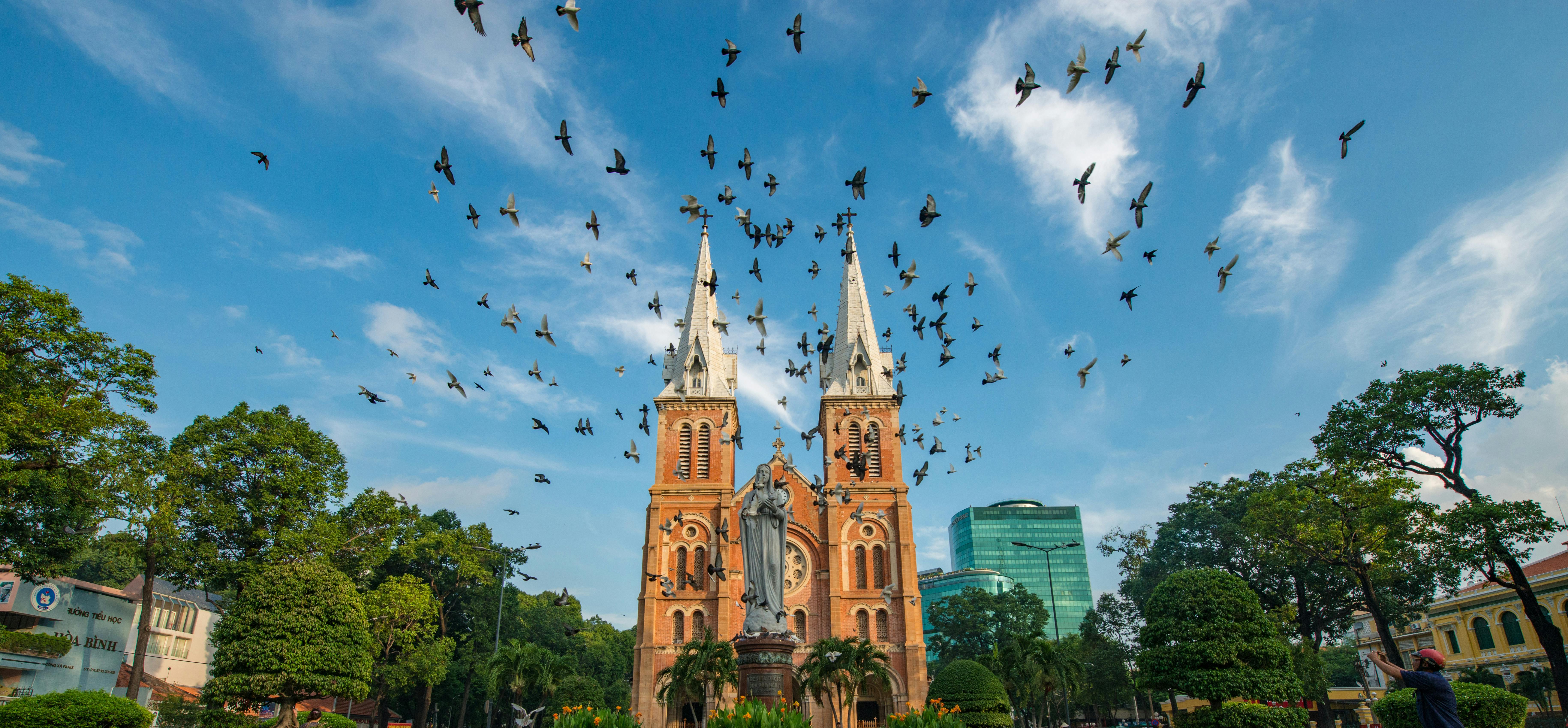
Known as Saigon, Ho Chi Minh City buzzes with energy and a rich history. Check out the War Remnants Museum for sobering insights into Vietnam’s past, and admire French colonial buildings like the Notre-Dame Cathedral Basilica of Saigon and the Central Post Office. For a real feast for the senses, dive into Ben Thanh Market, where you’ll find vibrant sounds, smells, and tastes.
- Join street food tours to safely taste local favorites like bánh mì and pho.
- Visit historical sites early or late to avoid crowds.
- Experience lively nightlife on Bui Vien Street with rooftop bars and buzzing clubs.
Hoi An: Ancient Town Charm and Nightlife
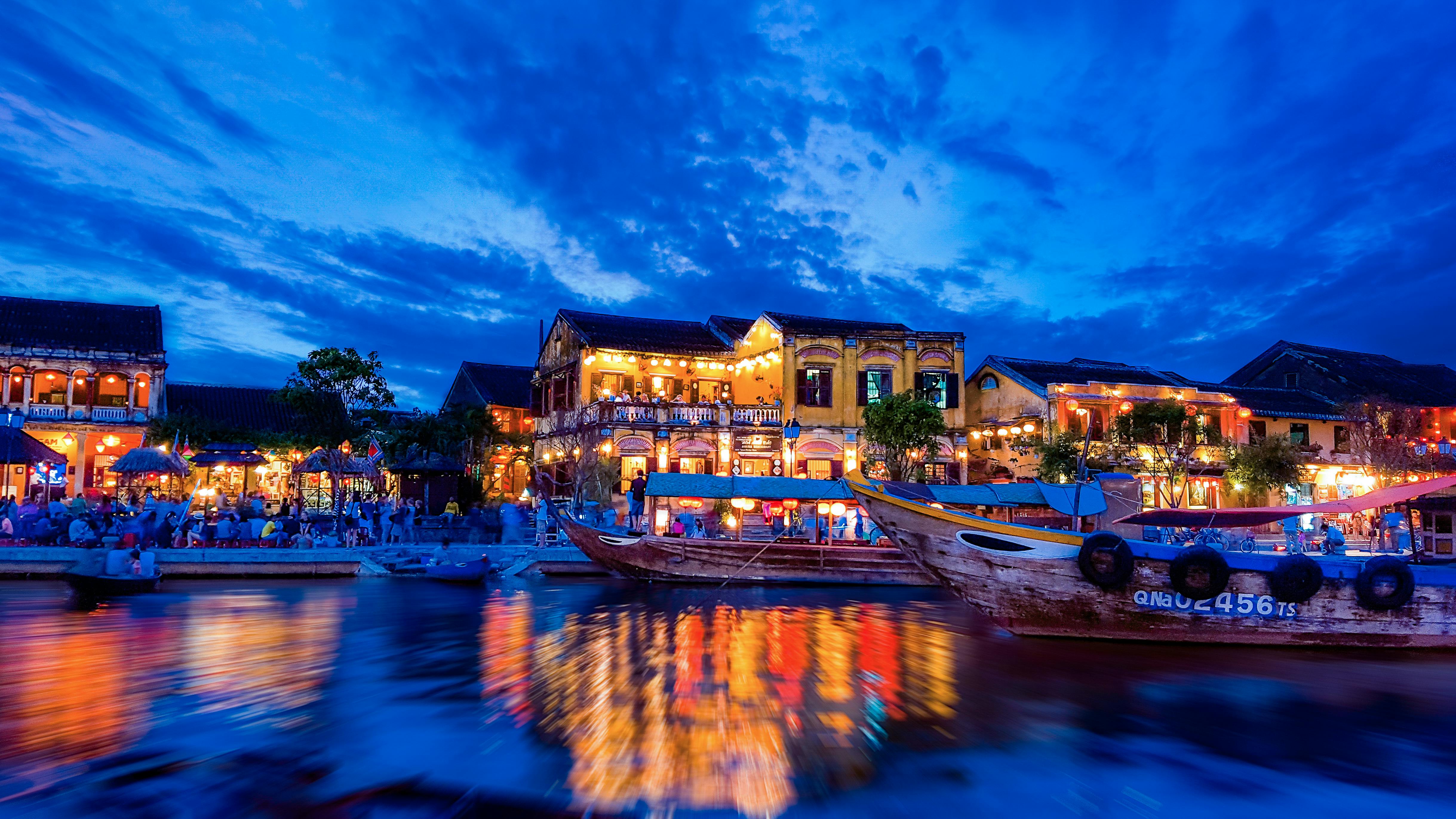
Hoi An’s UNESCO-listed Ancient Town is full of charm, with its historic merchant houses, lantern-lit streets, and adorable riverside cafés. The Japanese Bridge and colorful pagodas highlight the town’s unique mix of local and foreign influences.
When night falls, the streets light up with glowing lanterns and bustling night markets full of artisan crafts and tempting street food.
- Rent a bike to explore nearby rice paddies and beaches, then relax at sunset by the Thu Bon River.
- Try your hand at a lantern-making workshop or a Vietnamese cooking class to really dive into the culture.
- Visit during festivals or live street shows to experience lively celebrations.
Da Nang – Vibrant Beach Town

Da Nang is Vietnam’s laid-back beach city, where modern life meets natural beauty. Long stretches of sandy coastline, like My Khe Beach, are perfect for swimming and relaxing. The city is also known for its buzzing food scene and easy-going vibe. Don’t miss the Marble Mountains or the famous Golden Bridge held up by giant hands.
- Spend a morning at My Khe Beach for sunrise and fresh seafood.
- Head up the Marble Mountains for cool caves and views over the city.
- Visit the Golden Bridge at Ba Na Hills for that must-have photo.
- Try local favorites like mi quang noodles at street stalls and markets.
Hue: Imperial Heritage and Royal Architecture

Hue is where Vietnam’s imperial history comes alive. The vast Imperial City UNESCO site features palaces, temples, gates, and royal tombs that tell the story of the Nguyen dynasty. Don’t miss the peaceful Thien Mu Pagoda or a cruise along the Perfume River to soak up the city’s historic atmosphere.
- Take your time exploring the Imperial City with a guide who can share insider stories.
- Sample Hue’s royal dishes like banh khoai and bun bo Hue for a taste of history.
- Combine cultural tours with countryside cycling to visit tombs and ancient pagodas.
| City | Cultural Heritage | Urban Energy | Nightlife | Top Tips |
|---|---|---|---|---|
| Hanoi | Imperial Citadel, Temple of Literature, Old Quarter | Historic yet lively street life | Rooftop bars and cafés | Explore by cyclo, try egg coffee, stroll lakes |
| Ho Chi Minh City | War museums, colonial architecture, markets | Fast-paced, modern metropolis | Vibrant clubs on Bui Vien Street | Street food tours, early sightseeing, rooftop bars |
| Hoi An | Ancient Town, lanterns, Japanese Bridge | Laid-back, scenic charm | Night markets and street performances | Cycle countryside, lantern workshops, enjoy festivals |
| Da Nang | Marble Mountains, Cham Museum, Dragon Bridge | Relaxed coastal city, modern vibe | Beach bars, riverside night markets | Visit My Khe Beach, walk the Dragon Bridge at night, day trip to Ba Na Hills |
| Hue | Imperial City, royal tombs, pagodas | Quieter, historically rich | Riverside cafés with live folk music | Guided tours, imperial cuisine, cycle to mausoleums |
Spectacular Natural Wonders to Explore
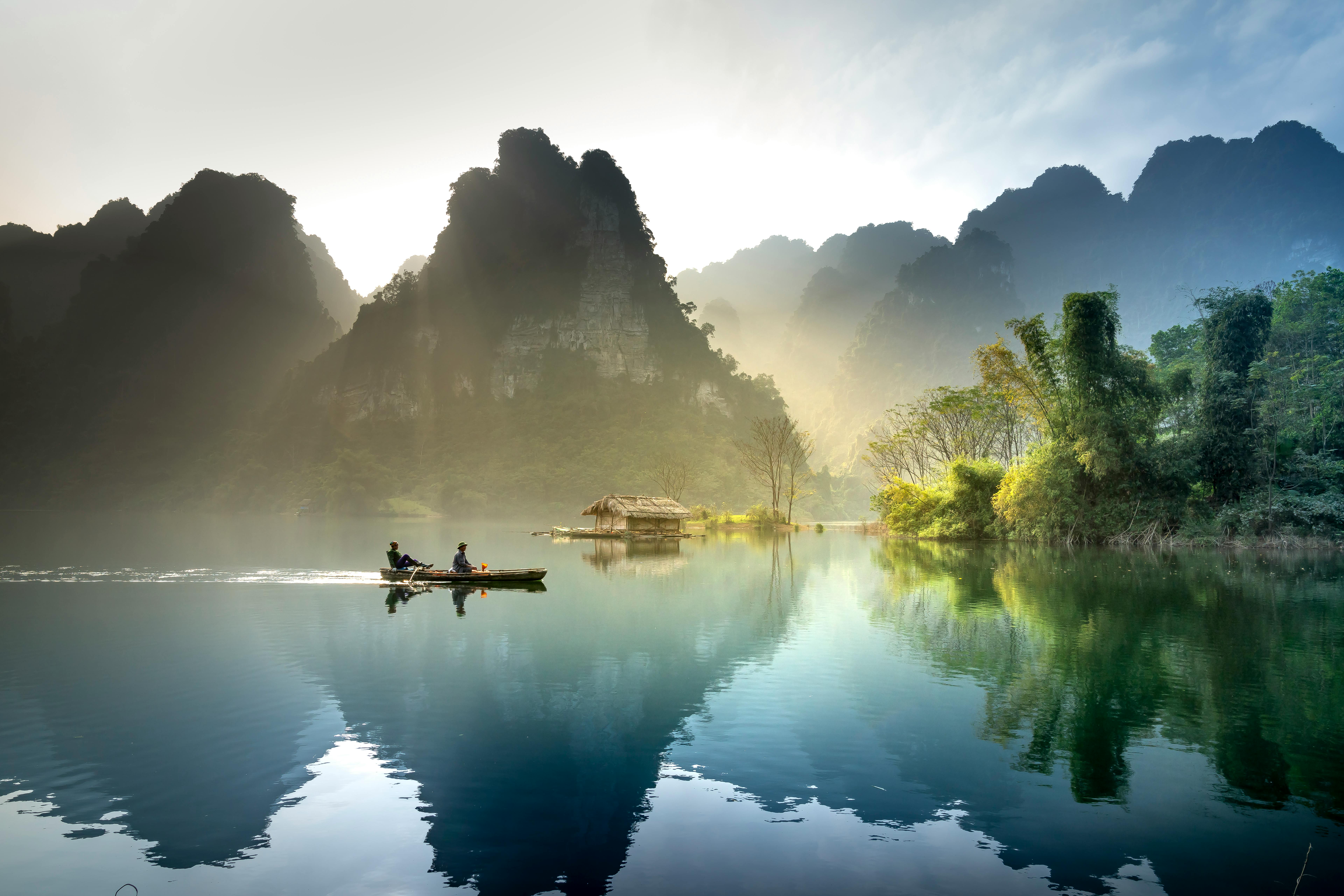
Vietnam’s natural beauty is seriously impressive. From legendary limestone towers to mysterious caves and peaceful river cruises, these spots give nature lovers and adventurers plenty to marvel at.
Check out some of the country’s top natural wonders to add to your itinerary in 2025.
Ha Long Bay: Iconic Limestone Karsts and Cruises

Ha Long Bay, a UNESCO World Heritage site, wows visitors with over 2,000 limestone islands and islets rising out of emerald waters.
The best way to see it all is by cruise—exploring caves, floating fishing villages, and secluded beaches.
Overnight cruises are especially magical, letting you catch stunning sunrises and sunsets right from the water.
- Try kayaking, swimming, cave exploring, or even seaplane tours for different views.
- It’s about two hours from Hanoi by car or bus, easy for day trips or longer stays.
- Any time of year works, but spring and autumn usually mean milder weather and fewer crowds.
Phong Nha-Ke Bang National Park: Cave Adventures

Home to Son Doong—the world’s largest cave—Phong Nha-Ke Bang is a wonderland of jungles, underground rivers, and dramatic limestone peaks.
Adventurers can join guided tours through caves like Paradise and Dark Cave, zipline in the forest, or boat on subterranean rivers.
- Get there via Dong Hoi city, which has good plane and train connections.
- Enjoy trekking, cave tours, cycling, and wildlife spotting.
- It’s a UNESCO site thanks to its unique biodiversity and geology.
Lan Ha Bay and Bai Tu Long Bay: Less Crowded Alternatives

If Ha Long Bay feels too busy, Lan Ha Bay and Bai Tu Long Bay offer quieter escapes.
Lan Ha Bay has over 400 limestone islands and calm lagoons—great for kayaking and snorkeling. Bai Tu Long Bay is known for clean beaches, clear waters, and peaceful vibes.
- Lan Ha Bay is reached by ferry or speedboat from Cat Ba Island.
- Bai Tu Long Bay cruises leave from ports close to Ha Long Bay.
- Both spots are perfect for swimming and private boat tours.
Ninh Binh: Scenic Landscapes and River Tours

Called “Ha Long Bay on land,” Ninh Binh amazes with towering limestone mountains above rice paddies and winding rivers. The Trang An Landscape Complex is a UNESCO site famous for boat rides through caves past temples. It’s a peaceful place to cycle, hike, and explore culture away from crowds.
- Just 1.5 to 2 hours from Hanoi by car or train—great for day trips or overnight stays.
- Highlights include boat tours, Bai Dinh Pagoda (one of Southeast Asia’s largest), and charming villages.
- A perfect mix of nature, culture, and calm.
Emerging and Off-the-Beaten-Path Destinations

If you want to skip the usual tourist spots, Vietnam has plenty of off-the-beaten-path places with stunning views, genuine culture, and a more chilled vibe. These emerging destinations blend adventure and local life for a truly special 2025 trip.
Ha Giang Loop: Majestic Mountain Views and Local Culture

The Ha Giang Loop is a famous motorbike route in northern Vietnam, winding through awe-inspiring mountains, deep valleys, and cliffside views. You’ll see terraced rice fields and misty peaks that most tourists miss. Along the way, vibrant ethnic communities like the H’mong, Dao, and Tay people welcome you into colorful markets and traditional villages.Many travelers rent motorbikes or join guided tours for safety. Staying in family-run homestays makes the experience even richer and supports local families. The untouched landscapes here promise unforgettable natural beauty and cultural authenticity.
- Stunning mountain panoramas perfect for photos.
- Authentic cultural encounters in ethnic villages.
- Stops worth visiting include Dong Van, Meo Vac, and the scenic Nho Que River valley.
Dong Van Karst Plateau: Remote Highlands and Ethnic Villages

The Dong Van Karst Plateau Geopark is a UNESCO Global Geopark with jaw-dropping limestone formations that look frozen in time. Near the Ha Giang Loop, it features small villages where ethnic minorities keep age-old customs and crafts alive.Visitors can trek rugged paths, explore lively markets, and learn about cultures like the H’mong and Lolo. Its raw beauty and rich culture appeal to travelers wanting quiet, deep experiences off the beaten track.
- Unique limestone karsts shaping dramatic landscapes.
- Traditional villages preserving centuries-old crafts.
- Great for trekking, photography, and cultural discovery.
Con Dao Islands: Pristine Beaches and Marine Life

Far from the mainland, the Con Dao Islands boast white sandy beaches, clear waters, and rich marine life. Less crowded than other coastal areas, they offer peace and incredible natural beauty.These islands are fantastic for snorkeling, diving, or just relaxing on quiet beaches. Plus, they have historical sites like the notorious Con Dao prison complex. Sea turtles nest here too, making it a special spot for eco-conscious travelers.
- Quiet beaches with excellent snorkeling and diving.
- Home to protected sea turtle nesting areas.
- Combination of history and stunning nature.
Pu Luong Nature Reserve: Eco-Trekking Adventures
The Pu Luong Nature Reserve in north-central Vietnam is a peaceful spot with lush terraced rice fields, limestone mountains, and waterfalls. It offers eco-friendly trekking and cycling, plus authentic homestays in stilt houses run by the Thai and Muong ethnic communities.
Visitors can enjoy tranquil village life, fresh mountain air, and see traditional farming up close. Pu Luong is a calm alternative to busier places like Sapa, perfect for connecting deeply with nature and culture.
- Beautiful trekking through rice terraces and forests.
- Rich cultural experiences in ethnic minority villages.
- Eco-lodges and homestays that focus on sustainable tourism.
“Heading to these less-traveled spots lets you see Vietnam’s diverse cultures and beautiful landscapes without the crowds. Planning with local guides makes the trip even smoother and more rewarding.”
Vietnam Travel Expert
Seasonal and Regional Travel Tips

Vietnam’s landscape is huge and varied, so weather changes a lot by region. Knowing the best time to visit different areas can make your trip way more enjoyable and help you skip bad weather. If you plan around festivals and seasonal highlights, you’ll get the most out of your visit—whether chasing sunshine on beaches or cool mountain air.
Best Time to Visit Vietnam by Region
Vietnam’s three main regions each have their own seasons that affect travel:
| Region | Best Months to Visit | Climate Highlights | Travel Tips |
|---|---|---|---|
| Northern Vietnam (Hanoi, Ha Long Bay, Sa Pa) | September–November, March–May | Cool and dry in autumn and spring; avoid humid summers and cold winters | Great for trekking and outdoor fun |
| Central Vietnam (Hue, Da Nang, Hoi An) | February–April | Warm and dry; watch out for typhoons and heavy rain from September–November | Perfect for beaches and historic tours |
| Southern Vietnam (Ho Chi Minh City, Mekong Delta) | November–April | Warm and dry most of the time; rainy season from May–October with short downpours | Best for river cruises and island trips |
How Vietnam’s Climate Affects Travel Plans
The north has four distinct seasons, with chilly winters in the mountains and hot, rainy summers that can be tricky for travel. Central Vietnam sometimes gets hit by typhoons and heavy rain in autumn, so plan accordingly. The south stays warm year-round, with a dry season that’s great for outdoor stuff; the rainy season mainly brings quick showers.Planning your flights and travel routes around weather can help you stay comfortable and make your trip smoother.
“Vietnam’s weather changes a lot depending on where and when you go, so picking the right place at the right time can really make a difference.”
Vietnam Travel Expert
Planning Around Festivals and Local Events
Vietnam’s festivals add exciting cultural flavor to your trip but require some planning. The biggest one is Tet, Lunar New Year (usually late January to February), which fills cities with joy but also means crowded transport and closed shops. Booking early is key if you travel then.The Mid-Autumn Festival in September lights up towns like Hoi An with glowing lanterns and performances, creating a magical vibe. Plus, the monthly Hoi An Lantern Festivals offer beautiful evenings for photos.Regional festivals in March and April showcase lively traditions and markets but often overlap with busy tourist seasons—so book your stay and travel in advance.
- Book hotels and transport well ahead during big holidays like Tet.
- Consider spring and autumn—great weather and fewer crowds.
- Keep an eye on local event calendars to catch cultural highlights without hassle.
Cultural Insights and Regional Distinctions

Vietnam’s cultural richness and regional diversity make traveling there especially rewarding. The differences in traditions, food, and language give visitors a deeper glimpse into the country’s many sides. Understanding and respecting these local traits will make your experience more authentic and enjoyable.
Northern vs Southern Vietnamese Culture and Traditions
Northern culture, centered around Hanoi, tends to be more reserved and formal. It values respect, order, and harmony, shown in polite greetings and traditional customs. Social interactions often focus on showing deference, especially to elders.Down south, Ho Chi Minh City is more laid-back and lively, known for friendliness, entrepreneurial spirit, and openness. The southern dialect is faster and includes more English words, reflecting its global connections.
- The North emphasizes respect, education, and ritual.
- The South blends Khmer and Chinese influences, with a relaxed social vibe.
- Knowing these differences helps you connect better with locals.
Vietnamese Cuisine: Regional Specialties to Try
Vietnamese food varies a lot by region, shaped by local ingredients and history. Northern dishes tend to be subtle with fresh flavors and light seasoning.Central Vietnam favors bold, spicy, and complex tastes, inspired by royal cuisine and coastal ingredients. Meanwhile, southern dishes are sweeter and richer, bursting with herbs, tropical fruits, and tangy notes.
| Region | Flavor Profile | Must-Try Dishes |
|---|---|---|
| North | Subtle, balanced, less spicy | Phở bò (beef noodle soup), bún chả (grilled pork with noodles), nem rán (fried spring rolls) |
| Central | Bold, spicy, complex | Bún bò Huế (spicy beef noodle soup), bánh bèo (steamed rice cakes), bánh bột lọc (tapioca dumplings) |
| South | Sweet, fresh, vibrant | Hủ tiếu Nam Vang (noodle soup), cá kho tộ (caramelized fish), canh chua (tamarind sour soup) |
Local Etiquette and Customs to Respect
Showing respect for local customs is key to a great visit in Vietnam. In the north, polite and formal greetings matter, especially to elders, involving both hands when passing items and gentle bows.Across the country, dress modestly in temples and rural areas. Take off your shoes before entering homes, avoid pointing your feet at people, and keep public displays of affection low-key to show courtesy.
“Never stick chopsticks upright in a bowl of rice—it looks like funeral rites and is very disrespectful.”
Vietnamese Cultural Guide
- Wait for an invitation before starting a meal and serve others first if you’re a guest.
- Hospitality in the South is relaxed; in the North, it’s more formal.
- Gift giving varies, with modest presents appreciated everywhere, especially in the North.
Planning Your Vietnam Trip: Steps and Itinerary Tips
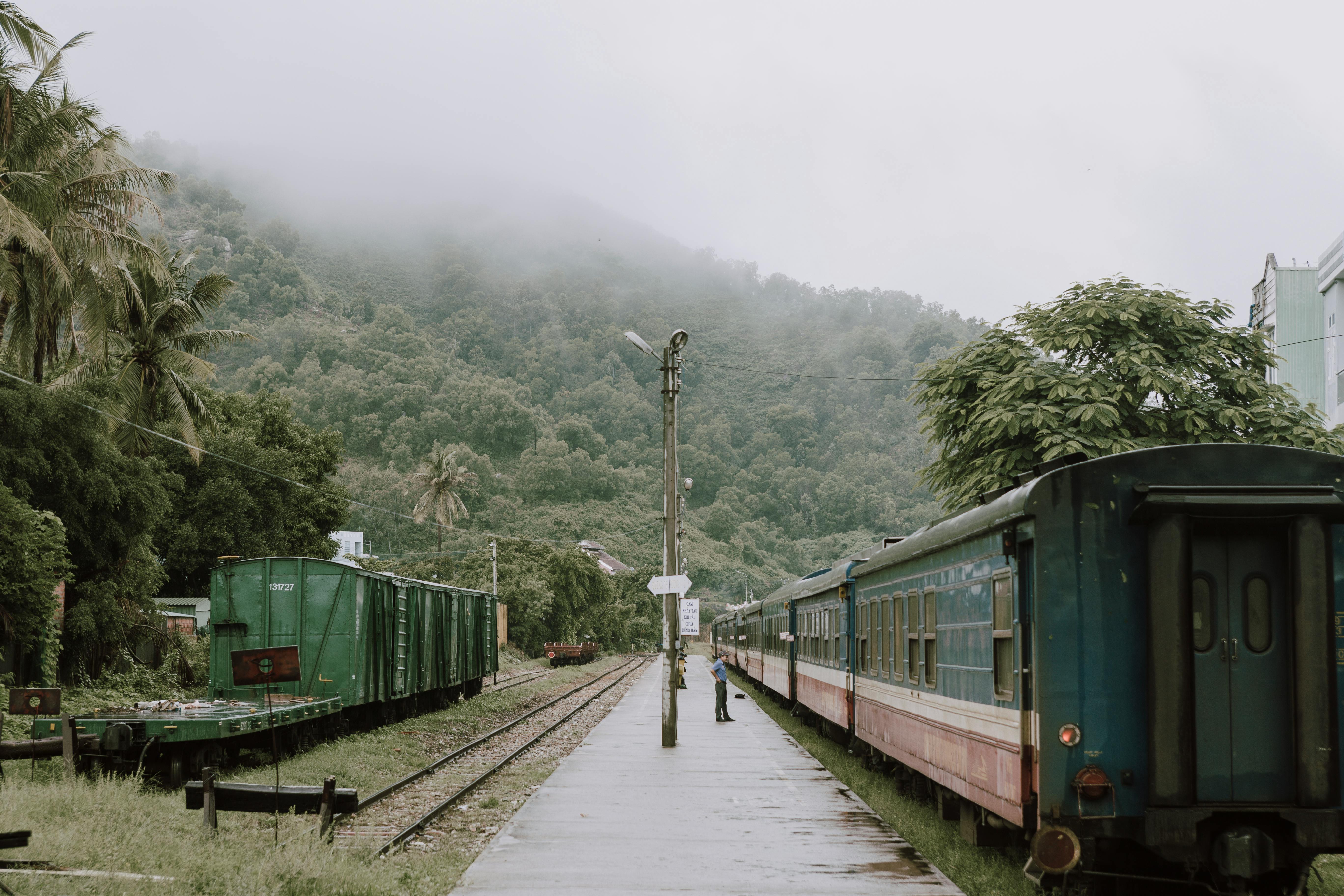
Planning your Vietnam trip is easier when you break things into steps. Whether you’re drawn to cities, landscapes, or small villages, balancing your itinerary with smart travel and a clear budget makes for a smooth, fun trip.
How to Create a Balanced Vietnam Itinerary
Start by figuring out how long you’ll be traveling.
If it’s less than a week, stick to one region like Hanoi in the north or Ho Chi Minh City in the south. For two weeks or more, consider a north-to-south route covering Hanoi, Ha Long Bay, Hue, Hoi An, and Ho Chi Minh City.
Mix city exploring, culture, nature, and downtime. Spend a few days in Hanoi’s Old Quarter, enjoy a Ha Long Bay cruise, then relax on beaches near Da Nang or Phu Quoc.
Avoid packing too much in each day—leaving room for surprises and rest makes a better trip.Book flights and key stays ahead, but keep some flexibility to follow wherever your adventure leads.
- Decide your trip length and focus area(s).
- Include a balance of city, nature, culture, and relaxation.
- Plan efficient travel routes to avoid backtracking.
- Pre-book important transport and accommodation for peace of mind.
- Keep some flexibility for spontaneous plans.
Transportation Options Within Vietnam
Vietnam has lots of ways to get around, fitting different budgets and comfort levels. Domestic flights between cities like Hanoi and Ho Chi Minh City are fast, affordable, and frequent, thanks to airlines like VietJet and Vietnam Airlines.
Trains offer scenic, relaxed journeys, especially between Hanoi, Hue, and Da Nang. Budget travelers might choose sleeper buses, which cover many routes but can be less comfortable on long trips.Private cars and taxis are handy for short distances or groups. If you’re comfortable with traffic, motorbike rentals give great freedom—but be cautious as the roads can be busy and chaotic.
- Domestic flights: Quick and usually affordable for long hops.
- Trains: Scenic and comfy, especially along the central coast.
- Buses: Cheap and common, with sleeper buses for overnight trips.
- Private cars and taxis: Offer comfort and flexibility, great for groups.
- Motorbike rentals: Perfect for day trips if you know what you’re doing.
Budgeting and Accommodation Recommendations
Vietnam suits all budgets. Backpackers can get by on $30–$50 a day, staying in hostels, eating street food, and taking local buses. Mid-range travelers usually budget $50–$100 daily for decent hotels, tours, and some flights. Luxury travelers might spend $100+ a day enjoying high-end resorts, private tours, and fine dining.
You’ll find hostels with social vibes in cities, homestays that immerse you in local culture, mid-range hotels balancing comfort and price, and luxury resorts near beaches and heritage spots like Hoi An.Don’t forget to budget for transportation, entrance fees, food, and a few treats. Booking early around festivals can save you money.
| Step | Details | Why It Matters |
|---|---|---|
| Trip length and area | Focus on one area for short trips or multiple for longer stays | Prevents rushed travel and ensures richer experiences |
| Travel modes | Mix flights, trains, and buses based on distance and budget | Saves time and money while staying comfy |
| Accommodation type | Options include hostels, homestays, hotels, and resorts | Matches comfort and style preferences |
| Daily budget | Cover lodging, meals, activities, and transport | Keeps spending on track and avoids surprises |
| Itinerary flexibility | Save days for unexpected finds or rest | Makes your trip more enjoyable and less stressful |
Top Activities and Experiences Across Vietnam

Vietnam has tons of activities for all kinds of travelers. From scenic cruises and outdoor adventures to vibrant street food scenes and cooking classes, you’ll find plenty of ways to make your trip unforgettable.
Cruising Ha Long Bay and Lan Ha Bay
Ha Long Bay is a top natural wonder, famous for its towering limestone karsts and green waters. Nearby Lan Ha Bay offers similar beauty but with fewer crowds. Cruising these bays on traditional wooden boats or modern vessels lets you soak in the magical scenery, explore hidden caves, swim in quiet coves, and visit floating fishing villages. Many cruises also offer kayaking, rock climbing, and cooking classes on board.
- Visit famous spots like Ti Top Island and Sung Sot (Surprise) Cave.
- Kayak through peaceful lagoons and secret coves for a close-up nature experience.
- Enjoy fresh seafood while watching the sun set over the bay.
Exploring Caves and National Parks
Vietnam’s national parks hold some of the world’s most amazing caves and diverse wildlife. Phong Nha-Ke Bang is famous for Hang Son Doong, the largest cave on Earth, explored via guided tours. Parks like Cuc Phuong and Cat Tien offer scenic hikes where you might spot rare animals, surrounded by peaceful forest.
- Join guided cave treks or boat trips in Phong Nha-Ke Bang.
- Explore diverse ecosystems and wildlife in Cuc Phuong.
- Spot birds and primates during Cat Tien’s forest hikes.
Cycling and Trekking in the Highlands
The northern highlands, especially around Sapa, are famous for terraced rice fields and vibrant hill tribe cultures. You can trek from easy walks to challenging multi-day hikes through remote villages and mountains. Cycling in the Hanoi countryside or along coastal roads gives you a personal look at rural Vietnam. Bikes and e-bikes are widely available so you can explore markets, paddies, and historic sites at your own pace.
- Meet and learn from ethnic minority communities.
- Ride through peaceful rural landscapes framed by mountains.
- Choose guided treks or self-led adventures.
Trying Street Food and Cooking Classes
You can’t visit Vietnam without diving into its famous street food. Cities like Hanoi and Ho Chi Minh City buzz with vendors selling pho, banh mi, bun cha, and more. Take a cooking class to go deeper—learn how to make authentic dishes, shop local markets, and get hands-on cooking experience alongside experts.
- Sample iconic dishes at night markets and street stalls.
- Join cooking classes in Hanoi, Hoi An, or even on Ha Long Bay cruises.
- Pick up recipes and tips from local chefs.
Where to Eat: Authentic Vietnamese Dining Experiences
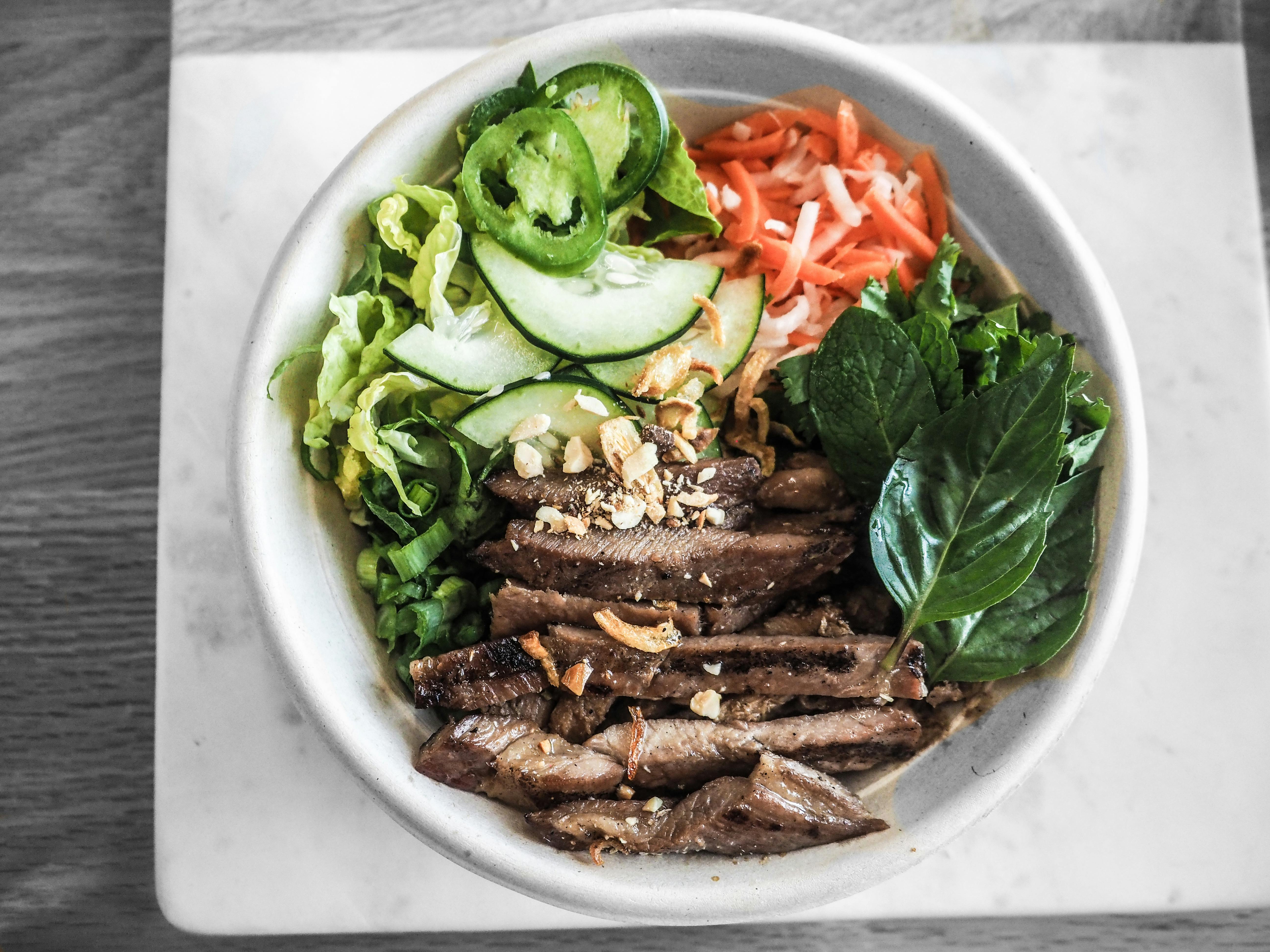
Tasting real Vietnamese cuisine is a big part of traveling here. From street stalls to bustling markets and cozy cafés, the food scene is a mosaic of flavors reflecting the country’s regions and traditions. Here’s a look at some great spots to eat in Hanoi and Ho Chi Minh City.
Best Street Food Spots in Hanoi and Ho Chi Minh City
Street food is the heart of Vietnamese cuisine, especially in Hanoi and Ho Chi Minh City.
Hanoi’s Old Quarter has tiny stalls where you can enjoy classics like pho, bun cha, and the unique egg coffee, often on little stools right on the sidewalk.
Popular streets like Ta Hien and Hang Buom are favorites with locals and tourists.
In Ho Chi Minh City, District 1 is packed with vendors serving up banh mi, com tam (broken rice), and banh xeo (Vietnamese pancakes) fresh amid bustling crowds.
- Hanoi: Try pho at places like Pho 10 Ly Quoc Su or Pho Vui; don’t miss Cha Ca La Vong’s turmeric fish.
- Ho Chi Minh City: Grab pho at Pho Hoa Pasteur, banh mi at Banh Mi Huynh Hoa, and fresh seafood around Vinh Khanh Street.
Popular Local Markets and Food Tours
Local markets are a feast for the senses. Hanoi’s Dong Xuan Market is alive with fresh ingredients and northern dishes.
Saigon’s Ben Thanh Market buzzes with grilled meats, tropical fruits, and more. For a deeper foodie adventure, try guided food tours that take you to hidden stalls and share stories behind the dishes.
- Hanoi: Check out Dong Xuan Market and book street food tours in the Old Quarter to sample many flavors.
- Ho Chi Minh City: Visit Ben Thanh Market and join food tours around District 1 for an immersive experience.
Recommended Restaurants and Cafes
If you prefer sit-down meals, both cities have great restaurants offering classic and modern Vietnamese dishes.
In Hanoi, Tầm Vị serves northern favorites with charm, and Quán Ăn Ngon brings regional street foods under one roof. Don’t miss Hanoi’s famous egg coffee in cozy cafés.
In Ho Chi Minh City, places like Com Tam Ba Ghien are well-known for authentic broken rice, and chic cafés offer the perfect spot for traditional cà phê sữa đá (iced coffee with condensed milk).
- Hanoi: Tầm Vị for home-style dishes, Quán Ăn Ngon for varied classics, and local spots known for egg coffee.
- Ho Chi Minh City: Com Tam Ba Ghien for broken rice, Bun Thit Nuong Hoang Van Thu for grilled pork noodles, and trendy cafés for strong iced coffee.
“Don’t just eat the food—explore the stories and culture behind each dish by joining a local food tour. It turns a meal into a lasting memory.”
Vietnam Travel Expert
Accommodation Options for Different Travelers

Vietnam offers lots of places to stay that fit all kinds of travelers—from luxury seekers to budget backpackers and cultural explorers. Whether you want fancy resorts or cozy homestays, you’ll find spots that fit your style and budget.
Hotels and Resorts for Comfort and Luxury
Cities like Hanoi and Ho Chi Minh City, plus beach spots like Phu Quoc and Nha Trang, have many hotels and resorts focused on comfort and luxury.
They often feature pools, spas, fancy restaurants, and gyms. Many are part of international chains, so you can expect consistent quality.
Serviced apartments are a nice middle ground, great for longer stays offering home comforts with hotel perks.
- Perfect if you want premium amenities and great service.
- Usually located in city centers, on beaches, or tourist favorites.
- Offer services like 24/7 reception, room service, and airport pickup.
Guesthouses and Hostels for Budget Travelers
Budget travelers and backpackers will find plenty of affordable guesthouses and hostels. Hostels often have dorm beds, private rooms, and social spaces to meet others.
Guesthouses are more private with basic comforts, usually close to city centers or attractions. Lots offer shared kitchens so you can save money by cooking.
- Great for solo travelers and those watching their spending.
- Have social vibes and chances to join tours or meet other travelers.
- Clean, simple, and usually run with warm local hospitality.
Unique Stays: Homestays and Boutique Hotels
If you want a more local experience, homestays and boutique hotels are fantastic. In rural areas like Sapa and the Ha Giang Loop, homestays let you live with local families, enjoy homemade meals, and learn about ethnic traditions.
Boutique hotels, often in cities and cultural towns, offer stylish designs, personal service, and a local vibe—great if you like something a bit different from standard hotels.
“Staying in a homestay up north lets you live like a local and make memories that luxury hotels just can’t match.”
Vietnam Travel Expert
Safety Tips and Practical Advice for Travelers

Vietnam is an awesome place to visit, and staying safe and prepared makes it even better. Here are some key tips for health, transport, and staying connected.
Health Precautions and Travel Insurance
Before you go, make sure your travel insurance covers emergency medical care, hospital stays, medical evacuation, and trip interruptions. Big cities have good hospitals, but rural areas might not, so evacuation coverage is important.Medical emergencies can get expensive without insurance. Also consider coverage for lost luggage and theft. Good providers like World Nomads and Allianz offer plans tailored to Vietnam travelers. Always keep your insurance info handy in case you need help.
- Get travel insurance with emergency and evacuation coverage.
- Include protection for trip cancellations.
- Cover theft and lost luggage.
- Pick providers with 24/7 emergency support.
Navigating Local Transportation Safely
Getting around Vietnam can be an adventure itself.
Use trusted taxis like Mai Linh or Vinasun, or grab rides via the Grab app, which is safe and offers fair prices.
If you rent a motorbike, always wear a helmet and be confident on busy roads—if you’re new to this, think twice.
City buses are cheap and usually safe, but watch out for pickpockets when it’s crowded. Cross streets carefully and slowly—local drivers expect pedestrians to be patient.Avoid traveling at night in unfamiliar or rural areas where there’s less light and limited help.
- Choose trusted taxi companies or use Grab.
- Always wear a helmet on motorbikes and rent from reliable sources.
- Stay alert on crowded buses to avoid pickpockets.
- Cross roads carefully and predictably.
- Avoid night travel especially in quiet areas.
Staying Connected: SIM Cards and Internet Access
Staying connected in Vietnam is easy and cheap. Grab a local prepaid SIM card as soon as you arrive for fast data and calls. Viettel, Mobifone, and Vinaphone are top providers, with Viettel being especially good in remote areas.
You’ll need your passport to register the SIM, so buy from official shops or airport kiosks.
Data plans are affordable and easy to top up at convenience stores. Portable WiFi is a good option if you’re traveling with a group or don’t want to swap SIMs. Most hotels and cafés offer free WiFi.For privacy, use a VPN when on public networks.
- Buy SIMs from official, registered sellers.
- Choose data packages that cover your usage needs.
- Consider portable WiFi if swapping SIMs isn’t ideal.
- Use VPNs on public WiFi for security.
Conclusion and Next Steps for Your Vietnam Journey

Vietnam offers a truly amazing range of experiences, from lively cities and historic towns to stunning natural scenery. As your trip wraps up, it’s worth looking back on the highlights and dreaming about future adventures.
Summary of Vietnam’s Best Travel Spots
Don’t miss the iconic Ha Long Bay with its dramatic karsts, the magical lantern-lit streets of Hoi An, or the energetic vibe of Ho Chi Minh City. Hanoi offers rich history and busy markets, while Phong Nha-Ke Bang National Park is a must for cave lovers. The royal heritage of Hue and the relaxing beaches on Phu Quoc Island complete a rich and rewarding itinerary.
- Ha Long Bay: Iconic limestone formations and scenic cruises.
- Hoi An: UNESCO heritage town with old-world charm.
- Ho Chi Minh City: Bustling city life and amazing street food.
- Hanoi: Ancient architecture and lively markets.
- Phong Nha-Ke Bang: World-class caves for adventurers.
- Hue: Royal palaces and imperial tombs.
- Phu Quoc: Pristine beaches and island relaxation.
Final Travel Tips for a Memorable Visit
Plan your Vietnam trip in spring or autumn for great weather. Use apps like Grab for easy transport, and pick accommodation that suits your style and budget. Sampling authentic street food like pho and banh mi is a must—it’s a delicious way to connect with local culture. Don’t forget to check visa requirements early, and pack light, breathable clothes and good shoes for all kinds of adventures.
“Planning your trip around weather and festivals helps you catch the best of Vietnam’s culture and climate.”
Vietnam Travel Experts
Encouragement to Explore Hidden Gems
While famous spots are must-sees, Vietnam’s real charm often hides in quieter places. Check out calm bays like Lan Ha Bay, explore the dramatic Ha Giang Loop mountains, or experience rural life through homestays and local markets. These hidden gems offer peace, rich cultural moments, and adventures that add depth beyond the usual tourist paths.
- Lan Ha Bay and Bai Tu Long Bay: Quiet and less crowded coastal getaways.
- Ha Giang Loop: Stunning mountains with lively ethnic cultures.
- Phong Nha-Ke Bang: Amazing caves and untouched nature.
- Rural homestays: Genuine, personal experiences with local families.
Final Thoughts
Visiting the best places to travel in Vietnam in 2025 promises a thrilling mix of city buzz, incredible nature, and rich culture. From well-known gems like Ha Long Bay and Hoi An to off-the-beaten-path spots like the Ha Giang Loop and Pu Luong Nature Reserve, this guide shows you how to create your own unique journey. Smart planning around weather, culture, and transport will keep your trip smooth, inspiring, and unforgettable.As you get ready, embrace both the popular highlights and hidden corners to truly capture Vietnam’s spirit. Dive into authentic tastes, warmly connect with locals through homestays, and keep an open mind for unexpected discoveries. With some prep, your 2025 Vietnam adventure will be a journey to remember, full of culture, nature, and vibrant life.
- Key Takeaways
- Introduction to Traveling in Vietnam
- Top Must-Visit Cities in Vietnam
- Spectacular Natural Wonders to Explore
- Emerging and Off-the-Beaten-Path Destinations
- Seasonal and Regional Travel Tips
- Cultural Insights and Regional Distinctions
- Planning Your Vietnam Trip: Steps and Itinerary Tips
- Top Activities and Experiences Across Vietnam
- Where to Eat: Authentic Vietnamese Dining Experiences
- Accommodation Options for Different Travelers
- Safety Tips and Practical Advice for Travelers
- Conclusion and Next Steps for Your Vietnam Journey
- Final Thoughts
Get your FREE Monstera Art download
Join our WanderLife Studios mailing list to get updates about our work and be the first to know about upcoming art products.
As a Thank You Gift, you will get this wonderful hand-drawn Monstera Line Art as a digital download for FREE .
